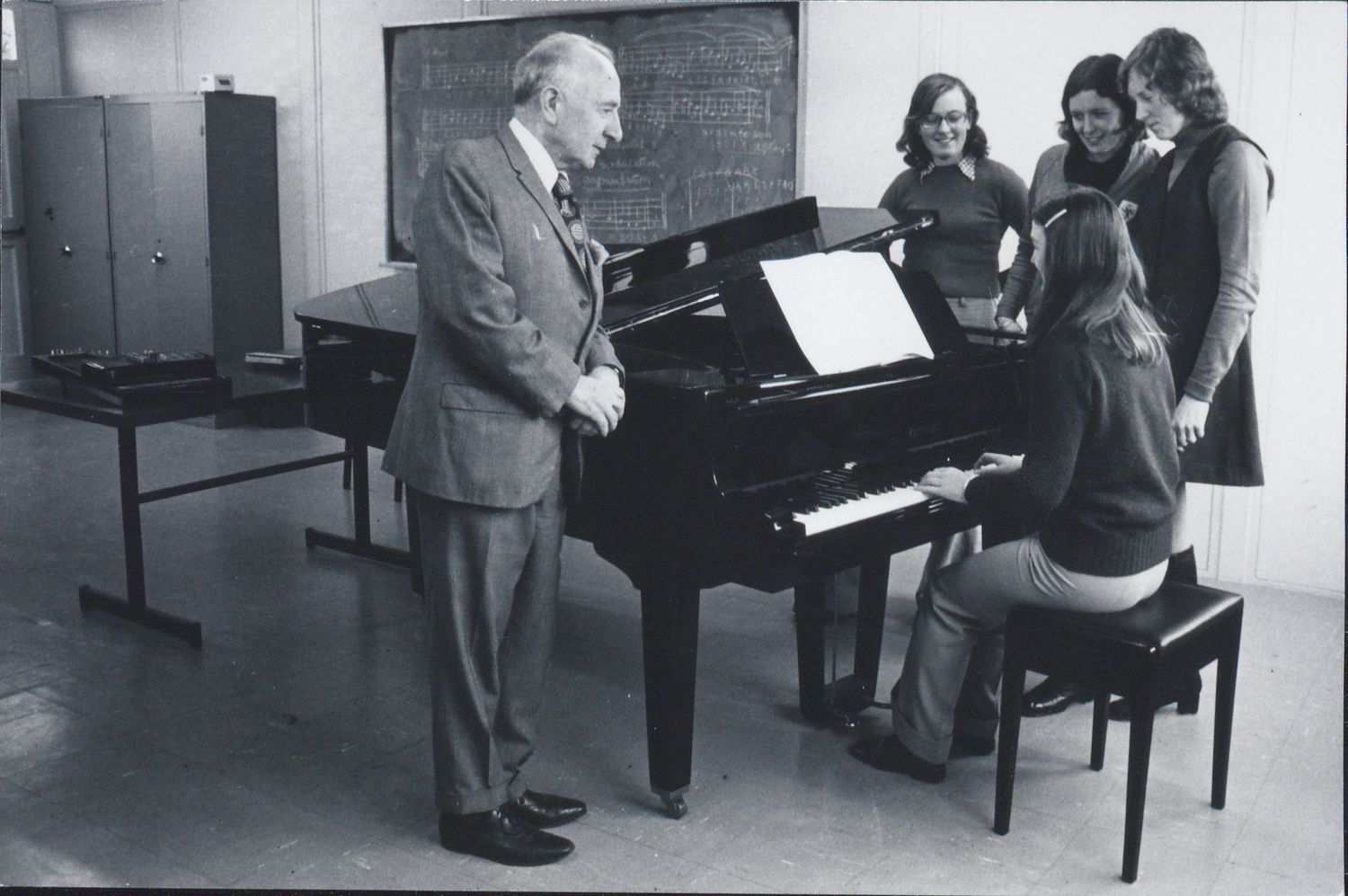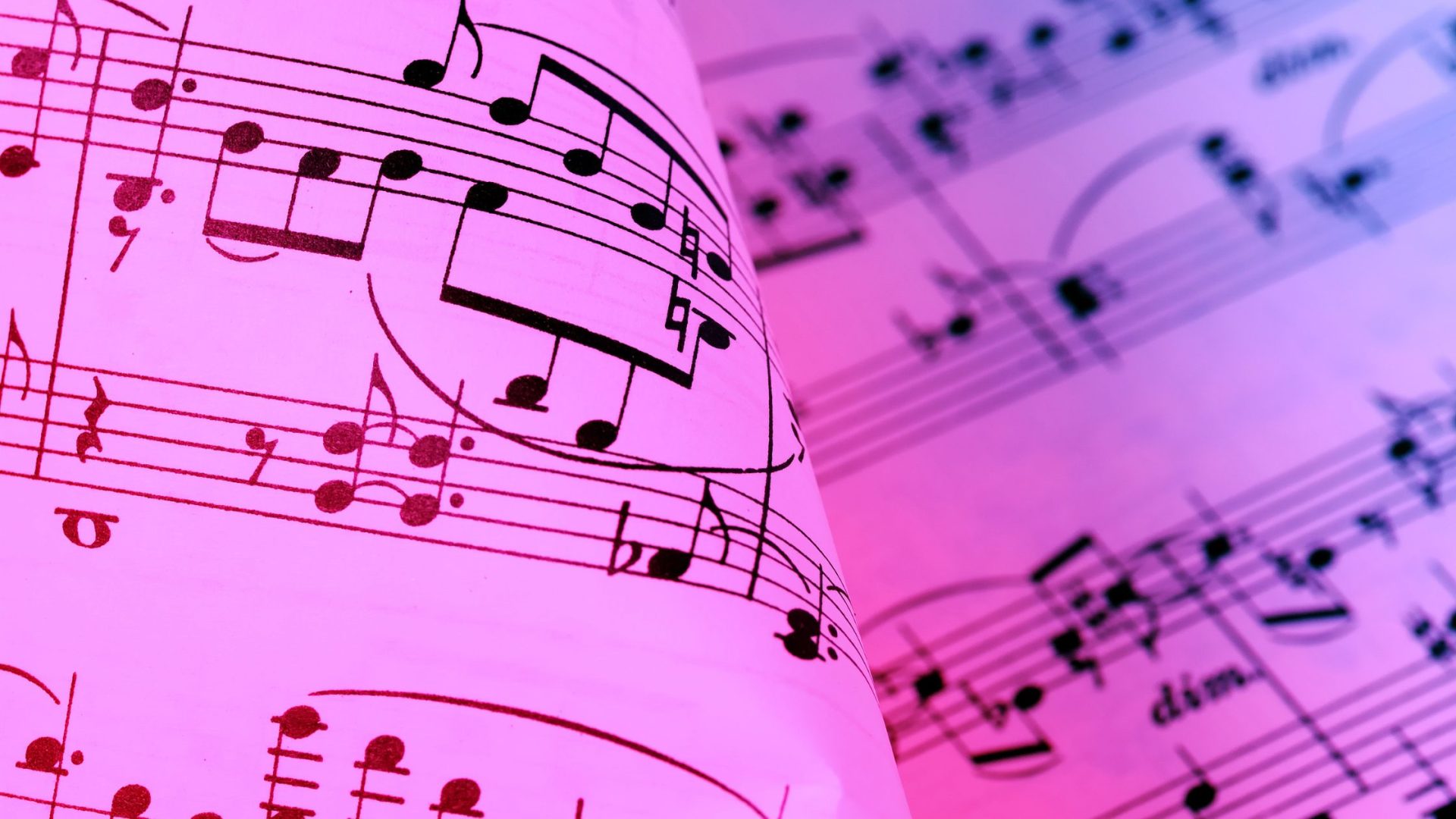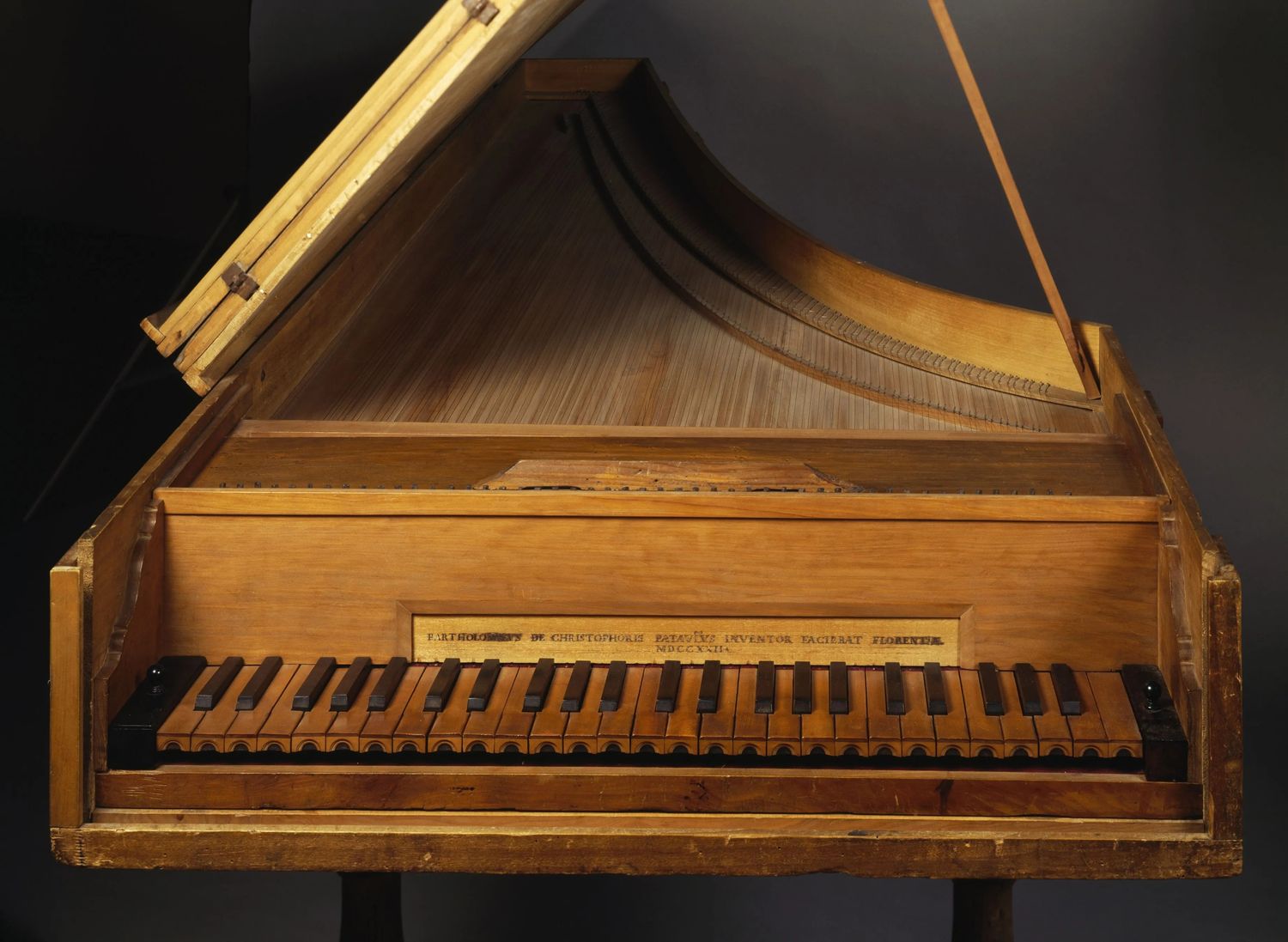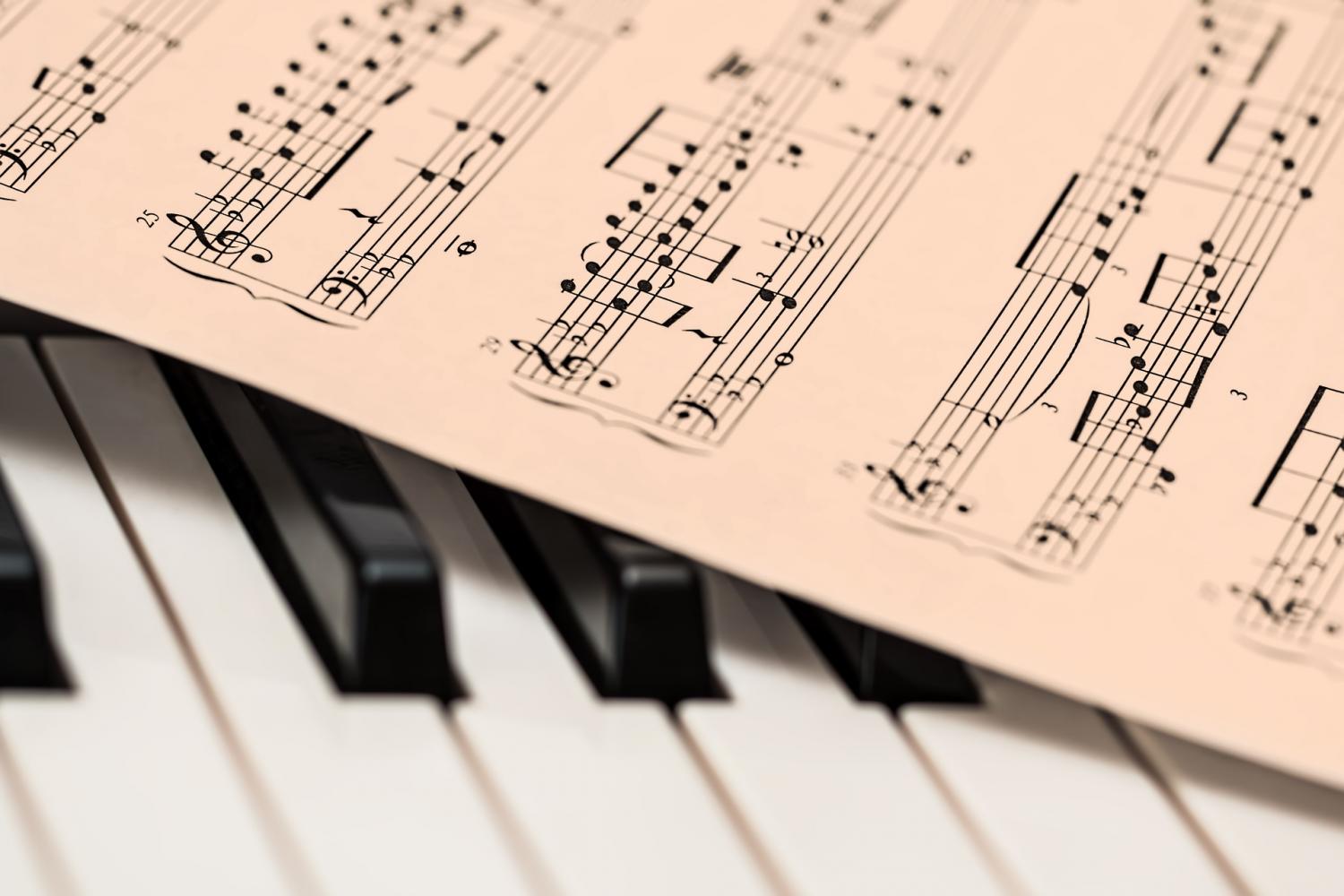Home>Events & Info>Music History>What Did The Invention Of Western Music Notation Enable For Musicians And Music History
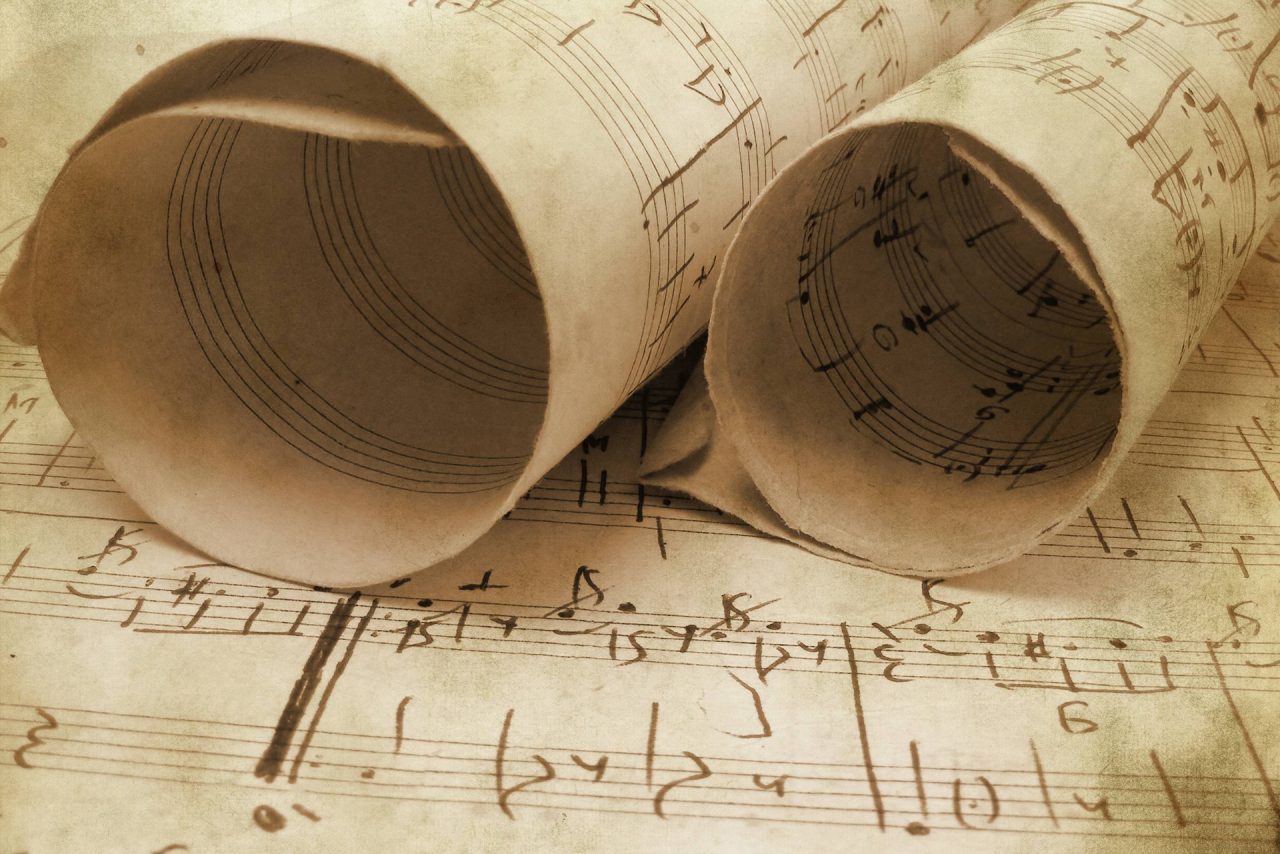

Music History
What Did The Invention Of Western Music Notation Enable For Musicians And Music History
Published: December 28, 2023
Discover how the invention of Western music notation revolutionized musicians' abilities and transformed the course of music history. Explore the profound impact and evolution of music with a focus on music history
(Many of the links in this article redirect to a specific reviewed product. Your purchase of these products through affiliate links helps to generate commission for AudioLover.com, at no extra cost. Learn more)
Table of Contents
- Introduction
- Brief History of Western Music Notation
- Standardized Notation System
- Increased Accessibility to Music
- Preservation and Documentation of Music
- Development of Complex Musical Compositions
- Facilitation of Musical Education
- Communication and Collaboration among Musicians
- Influence on Music Theory and Analysis
- Impact on Historical Study of Music
- Conclusion
Introduction
Music has been an integral part of human culture for centuries, with diverse styles and genres emerging around the world. However, it was not until the invention of Western music notation that musicians were able to communicate and preserve their musical ideas in a standardized and easily understandable format. The development of music notation revolutionized the way music was created, shared, and studied, leaving an indelible mark on music history.
In this article, we will explore what the invention of Western music notation enabled for musicians and how it has shaped the course of music history. From its humble beginnings to its sophisticated present, we will delve into the impact that music notation has had on the accessibility of music, the preservation of compositions, the development of complex musical forms, and its influence on education, collaboration, theory, and historical study.
Through a comprehensive understanding of music notation’s significance, we can truly appreciate its role in the evolution of music and its ongoing relevance in contemporary musical practices.
Brief History of Western Music Notation
The origins of Western music notation can be traced back to ancient Greece, where the use of symbols to represent musical tones began to emerge. However, it was the development of neumes in the early Christian chants of the 9th century that laid the foundation for the modern Western notation system. Neumes were small markings placed above the text to indicate the melodic contour of the chant.
Over time, these early neumes evolved into distinct notes with specific durations, thanks to the pioneering work of Guido d’Arezzo in the 11th century. Guido introduced a system of staff lines, clefs, and notes that allowed for a more precise representation of musical pitches and rhythms.
In the following centuries, music notation continued to evolve and become more standardized. The use of specific symbols to denote pitch, rhythm, dynamics, and articulation became more prevalent, allowing composers to convey their musical intentions more accurately.
The advent of printing in the 15th century further propelled the dissemination and standardization of music notation. Printed books and sheet music made music more accessible to a wider audience, leading to an explosion of musical compositions and the development of various genres and styles.
Throughout the Baroque, Classical, Romantic, and Modern periods, music notation continued to evolve, incorporating new symbols and conventions to accommodate the changing musical landscape.
Today, Western music notation consists of a set of standard symbols, including note heads, stems, accidentals, time signatures, and dynamics markings. It provides a comprehensive system to notate melodies, harmonies, rhythms, and expressive elements, allowing performers to interpret and bring the composer’s vision to life.
The rich history of Western music notation serves as a testament to its enduring importance and influence in the world of music.
Standardized Notation System
One of the most significant contributions of Western music notation is its establishment of a standardized system. Prior to the invention of notation, music was primarily transmitted through oral tradition, making it difficult to preserve and replicate compositions accurately. With the advent of notation, musicians could now communicate their musical ideas in a consistent and universally recognized format.
The standardized notation system brought several key benefits to the world of music. Firstly, it allowed for the efficient transmission of musical information across both time and space. Composers could write down their compositions, and these written scores could be distributed and performed by musicians far and wide. This facilitated the sharing of musical ideas, allowing for cross-cultural influences and the development of new musical styles.
Moreover, the standardized notation system enabled clearer communication between composers and performers. Composers can express their musical intentions more precisely, specifying the pitch, duration, dynamics, and expression in their compositions. This provides performers with a detailed roadmap for interpretation, avoiding ambiguity and ensuring consistent musical interpretations across different performers and performances.
The standardized notation system also supports the efficient rehearsal and performance of complex musical compositions. Instead of relying solely on oral instruction or memorization, musicians can read from a score, enabling them to focus on refining their technique and expression. This has allowed for the creation of intricate and elaborate musical forms such as symphonies, concertos, and operas.
Additionally, the notation system opened up opportunities for music to transcend language barriers. With music notation, musical ideas can be communicated and understood by musicians worldwide, regardless of their spoken languages. This global accessibility has fostered a rich and diverse musical exchange, showcasing the universality of music as a language in itself.
Overall, the establishment of a standardized notation system revolutionized the way music is created, performed, and shared. It has provided a common language for musicians to communicate, ensuring the preservation, understanding, and dissemination of musical compositions throughout history.
Increased Accessibility to Music
Prior to the invention of Western music notation, access to music was generally limited to those who had the privilege of learning directly from a musician or being present at live performances. The standardized notation system changed this dynamic, making music more accessible to a broader audience.
One of the primary ways in which notation increased accessibility to music was through the mass production and distribution of sheet music. With the advancement of printing technology, musical compositions could be reproduced and sold at a larger scale, allowing individuals to purchase and study music at their own leisure. This democratization of music enabled people from various social backgrounds to engage with and explore musical works.
Furthermore, the standardized notation system facilitated the establishment of music schools and conservatories, where aspiring musicians could receive formal instruction in music theory and performance. By providing a structured curriculum and using notation as the basis for teaching, these institutions opened doors for individuals to develop their musical skills and pursue careers in music.
Notation’s accessibility also fostered a culture of amateur musicianship. With the ability to read music, individuals who were not professional musicians could still participate in music-making activities. Whether playing an instrument for personal enjoyment or joining community-based musical ensembles, notation empowered people to engage with music on their own terms.
Another significant impact of increased accessibility to music through notation is the preservation of musical traditions and cultural heritage. Prior to notation, many traditional and folk compositions were passed down orally, carrying the risk of being lost or altered with each generation. With the ability to write down and preserve music in scores, notation became a valuable tool for safeguarding these musical traditions for future generations to experience and appreciate.
Overall, the increased accessibility to music brought about by the invention of Western music notation has had a profound impact on society. It has allowed for a more diverse and inclusive musical landscape, breaking down barriers and giving individuals the opportunity to participate in, appreciate, and contribute to the rich tapestry of musical expression.
Preservation and Documentation of Music
One of the most significant contributions of Western music notation is its role in the preservation and documentation of music throughout history. Before the invention of notation, musical compositions were primarily passed down through oral tradition, making it challenging to ensure their accuracy and longevity.
The invention of notation allowed composers to write down their musical ideas in a standardized format, creating a lasting record of their compositions. By notating the specific pitches, rhythms, and other musical elements, notation provided a tangible representation of the music that could be referenced and studied for generations to come.
Notation also played a crucial role in the preservation of ancient and historical musical works. Without the written scores, many of these compositions may have been lost to time, as they relied solely on oral transmission. Notation allowed for the documentation of these works, ensuring their preservation and providing insights into different musical periods and styles.
Furthermore, the ability to document music through notation has facilitated the study and analysis of musical compositions. Musicologists and researchers can examine written scores to gain a deeper understanding of the creative processes, stylistic choices, and historical context of a particular piece. It allows for comparative analysis, enabling scholars to trace the evolution and influences of musical styles across different time periods and geographical regions.
The preservation and documentation of music through notation also have practical implications for musicians. As musical societies and ensembles progressed, notation became a crucial tool for rehearsal and performance. Orchestras, choirs, and bands rely on written scores to ensure that all performers are on the same page, playing the correct notes and following the intended dynamics and phrasing.
Moreover, the documentation of music through notation allows for the accurate transcription and arrangement of compositions for different instruments or arrangements. This flexibility opens up opportunities for collaborations and reinterpretations, as musicians can adapt and transform existing compositions while respecting the integrity of the original work.
In summary, the invention of Western music notation has had an immense impact on the preservation and documentation of music. It provides a tangible form that allows compositions to be passed down through generations, studied by scholars, and interpreted by performers. Without notation, many musical works may have been lost, and our understanding of music history would be significantly diminished.
Development of Complex Musical Compositions
The invention of Western music notation has played a pivotal role in the development and evolution of complex musical compositions. Prior to the widespread adoption of notation, musical forms were limited in their complexity and scope due to the challenges of transmitting and memorizing intricate compositions.
With the advent of notation, composers gained a powerful tool to notate and communicate their musical ideas precisely. This newfound ability to notate complex harmonies, intricate melodies, and nuanced rhythms paved the way for the development of more elaborate musical forms.
One notable example is the rise of polyphonic music during the Renaissance. Through notation, composers such as Giovanni Palestrina and Josquin des Prez were able to create intricate compositions with multiple independent melodic lines occurring simultaneously. The precise notation of each voice allowed for the intricate interplay of melodies and harmonies, leading to the emergence of rich and complex polyphonic textures.
Similarly, the development of instrumental music during the Baroque era was greatly facilitated by the use of notation. Composers like Johann Sebastian Bach were able to write intricate fugues, concertos, and preludes that showcased the technical capabilities of various instruments. Notation enabled precise communication of intricate ornamentations, complex counterpoint, and improvisatory elements, leading to the flowering of virtuosic instrumental music.
As music continued to evolve, notation facilitated the exploration of new musical techniques and innovations. From the development of polyrhythms in twentieth-century music to the intricate harmonies and extended techniques of contemporary music, notation has allowed composers to document and communicate these experimental and complex musical ideas.
Furthermore, notation has enabled composers to experiment with different structural forms and arrangements. From the sonata form of the Classical period to the concept of through-composed works in the Romantic era, notation has provided composers with a means to structure and organize their compositions in innovative and compelling ways.
Overall, the development of complex musical compositions owes a great debt to the invention of Western music notation. By providing a precise and universal system of communication, notation has empowered composers to push the boundaries of musical expression, resulting in the creation of intricate and sophisticated works for the enjoyment and appreciation of generations to come.
Facilitation of Musical Education
The invention of Western music notation has had a profound impact on the field of musical education, making it more accessible and structured. Notation provided a standardized system for teaching and learning music, enabling individuals to develop their musical skills and knowledge in a systematic manner.
One of the primary ways in which notation has facilitated musical education is through the establishment of music theory. With a standardized system of notation, music theory could be developed as a comprehensive framework for understanding the structure, harmony, and composition of music. By studying notation, students can delve into the intricacies of scales, intervals, chords, and other fundamental elements of music theory, allowing for a deeper understanding of how music is constructed.
In addition to theory, notation allows for the efficient teaching of instrumental or vocal techniques. Students can learn to read and interpret notation, enabling them to master the technical aspects of playing an instrument or singing. Notation acts as a visual guide, providing students with a roadmap to navigate through a musical piece, helping them develop their reading skills and sight-reading abilities.
Furthermore, notation serves as a valuable resource for music teachers and instructors. With a written score, teachers can provide students with a structured framework for learning and practicing. They can assign specific exercises, etudes, or pieces to guide their students’ progress. Notation also allows for the annotation and marking of musical nuances, phrasing suggestions, and interpretive insights, providing students with a more comprehensive understanding of the musical work.
Notation also plays a significant role in ensemble education and collaboration. Through notation, students can participate in orchestras, bands, choirs, or other musical ensembles, performing together as a cohesive unit. The ability to read music allows musicians to coordinate their efforts, understanding their individual parts in relation to the whole, resulting in a harmonious and synchronized performance.
Moreover, the study of notation provides a foundation for music composition. By analyzing and studying notated musical works, students can learn the principles of composition, including melody, harmony, rhythm, and form. They can gain insights into the techniques employed by great composers and apply them in their own creative endeavors.
Overall, the incorporation of Western music notation in musical education has revolutionized the field, providing a structured framework for teaching, learning, and understanding music. It empowers students to develop their musical skills, knowledge, and creativity, fostering a lifelong appreciation and engagement with the art of music.
Communication and Collaboration among Musicians
One of the key benefits of the invention of Western music notation is its role in facilitating communication and collaboration among musicians. Notation serves as a universal language that allows musicians from different backgrounds to come together, understand each other, and create harmonious musical experiences.
With notation, musicians can share musical ideas and compositions with ease. Whether it’s a composer sharing a new piece with performers or musicians exchanging ideas during a collaborative project, notation provides a clear and concise method of communication. Musicians can see the musical structure, understand the intended phrasing and dynamics, and work together to bring the music to life.
Notation allows for accurate and efficient rehearsals and performances. Instead of relying solely on oral instructions, musicians can refer to the written score to ensure they are all on the same page, playing in sync and following the composer’s intentions. This unified approach promotes cohesive performances and enhances the overall musical communication and expression.
Furthermore, notation enables collaboration between musicians who may not be able to rehearse together in person. With a shared understanding of notation, musicians can exchange sheet music digitally or physically, allowing for remote collaboration. This opens up opportunities for cross-cultural collaborations, where musicians from different parts of the world can come together to create music that transcends geographical boundaries.
Notation also facilitates ensemble playing, where multiple musicians perform together as a cohesive unit. By following the written score, musicians can combine their individual parts to create a layered and harmonious musical experience. Notation provides a roadmap for each musician to navigate their specific role in the ensemble, encouraging a sense of unity and teamwork.
Beyond performance, notation allows for the arrangement and adaptation of existing compositions. Musicians can take a piece originally written for one instrument or ensemble and arrange it for a different instrumentation. This flexibility in notation fosters collaborative creativity, as musicians can build upon each other’s ideas and contribute to the evolution of a musical work.
Notation also serves as a valuable tool for music teachers and educators to guide and instruct their students. By providing written scores, teachers can communicate musical concepts, techniques, and interpretations more effectively. This enhances the learning experience and encourages students to develop their own interpretive skills while maintaining an awareness of the composer’s intentions.
In summary, the invention of Western music notation has revolutionized communication and collaboration among musicians. It provides a common language that enables musicians to share, interpret, and perform music together. Through notation, musicians can create harmonious and unified musical experiences, fostering a sense of connection and artistic expression.
Influence on Music Theory and Analysis
The invention of Western music notation has had a profound influence on the development of music theory and analysis. Notation provides a visual representation of musical elements, allowing theorists and analysts to study and understand the intricate workings of compositions in a systematic and structured manner.
Music notation serves as the foundation for the establishment of music theory. By observing and analyzing the patterns and structures present in notated compositions, theorists can formulate principles and rules that govern the organization and construction of music. Notation allows for the identification of scales, chords, intervals, and other fundamental elements, providing a basis for understanding harmony, melody, rhythm, and form.
Moreover, notation enables music theorists to study larger-scale structures and formal designs within compositions. Through the examination of notated scores, analysts can identify recurring themes, variations, and developmental processes. They can explore the use of musical devices such as motivic manipulation, modulation, and contrapuntal techniques, contributing to a deeper understanding of the compositional choices made by the composer.
Notation also plays a crucial role in the analysis of historical music. By studying notated scores from different musical periods, theorists can trace the evolution of musical styles, identifying commonalities and differences between composers and eras. Through notation, they can unravel the complexities of contrapuntal writing in the Baroque period, the harmonic innovations of the Classical period, or the expressive freedom of the Romantic era.
Additionally, notation assists in the analysis of contemporary and avant-garde music. The intricate notations found in these compositions provide insights into the unique techniques and unconventional approaches employed by composers. By deciphering complex notations, analysts can navigate through extended techniques, graphic notations, and other non-traditional musical elements, leading to a deeper appreciation and understanding of contemporary works.
Furthermore, notation plays a significant role in comparative analysis, allowing theorists to compare and contrast different compositions, genres, and styles. By examining scores, they can identify musical similarities and influences between works, shedding light on interconnections and cross-pollination of ideas across different time periods and geographical regions.
In summary, the invention of Western music notation has revolutionized music theory and analysis. Notation serves as the foundation for studying musical structures, formal designs, and historical developments. It enables theorists and analysts to delve into the intricate details of compositions, unraveling the compositional choices made by composers and contributing to a deeper understanding of the underlying principles and aesthetics of music.
Impact on Historical Study of Music
The invention of Western music notation has had a significant impact on the field of historical study of music. Through the written records provided by notation, music historians have been able to uncover and explore the rich tapestry of musical history, studying and interpreting compositions from various time periods and cultures.
Notation has played a crucial role in establishing a chronological understanding of music history. By analyzing notated scores from different eras, historians can trace the evolution of musical styles, identifying key characteristics, trends, and innovations. This allows for the classification of different musical periods and provides a framework for understanding the cultural and societal context in which the music was created.
Furthermore, notation provides historians with tangible evidence of musical practices and traditions. It allows for the study of specific compositions, genres, and forms that have contributed to the development of music over time. By examining notated scores and their historical context, historians can gain insights into the performance practices, aesthetics, and cultural significance of music from different periods and regions.
Notation also plays a vital role in the study of music manuscripts and their transmission. Historians can analyze historical manuscript collections, studying the annotations, corrections, and variations found in the written scores. By comparing different versions of the same composition, historians can unravel the ways in which music was passed down, modified, and adapted over time.
Through notation, music historians can reconstruct and perform music from the past. By deciphering and interpreting notated scores, historians can bring historical compositions to life, providing invaluable insights into the sound world of bygone eras. This allows for a more immersive and authentic exploration of historical musical practices.
Notation has also opened up avenues for interdisciplinary study. Historians can collaborate with musicologists, performers, and scholars from other fields to gain a holistic understanding of the historical context and reception of musical works. By analyzing notated scores alongside historical documents, artworks, and social records, historians can illuminate the interconnectedness of music with other aspects of human culture.
Overall, the impact of Western music notation on the historical study of music cannot be overstated. Notation serves as a window into the past, enabling historians to explore and interpret music from different time periods and cultures. Through the analysis of notated scores, historians can uncover the rich layers of musical history, shedding light on the artistic, cultural, and social dimensions of music throughout the ages.
Conclusion
The invention of Western music notation has undoubtedly shaped the course of music history, revolutionizing the way music is created, shared, studied, and preserved. From its origins in ancient Greece to its modern standardized form, music notation has played a pivotal role in the development and dissemination of music.
Notation has increased accessibility to music, allowing for the mass production and distribution of sheet music. It has democratized music, enabling individuals from various social backgrounds to engage with and explore musical works. Notation has also fostered a culture of amateur musicianship, as individuals can participate in music-making even without professional training.
The preservation and documentation of music have been greatly facilitated by notation. It has allowed for the accurate recording and reproduction of musical compositions, ensuring their longevity and providing a valuable resource for historical study. Notation serves as a universal language that transcends time and space, facilitating communication and collaboration among musicians from diverse backgrounds.
Furthermore, notation has influenced music theory and analysis, providing a structured framework for understanding and studying musical elements, structures, and forms. It has propelled the development of complex and innovative musical compositions, pushing the boundaries of musical expression and creativity.
Notation has also had a profound impact on the field of musical education, providing a standardized system for teaching and learning music. It has empowered individuals to develop their musical skills, knowledge, and creativity, fostering a lifelong appreciation and engagement with music.
Western music notation has revolutionized the historical study of music, allowing historians to explore the rich cultural and societal context in which music was created and performed. Through notation, historians can unravel the complexities and evolution of musical styles, providing invaluable insights into the past.
In conclusion, the invention of Western music notation has had far-reaching implications for musicians, music lovers, scholars, and society as a whole. It has not only shaped the development and dissemination of music but has also enriched our understanding and appreciation of the vast and diverse world of music throughout history.

